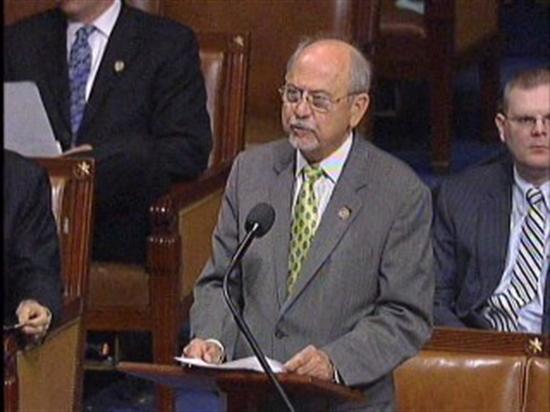Floor Statements
Chairman Hastings' Floor Statement on Bipartisan Lands Package to Cut Federal Red Tape, Boost Economic Development
WASHINGTON, D.C.,
June 19, 2012
|
Jill Strait, Spencer Pederson or Crystal Feldman
(202-225-2761)
House Natural Resources Committee Chairman Doc Hastings (WA-04) delivered the following statement on the House floor today in support of H.R. 2578, The Conservation and Economic Growth Act a package of 14 public lands bills that will cut federal red tape, boost economic development, protect the environment, and create American jobs.
“The Conservation and Economic Growth Act is aimed squarely at cutting government red tape and bureaucracy to boost local economic development and job creation. This legislation contains fourteen common sense bills from the House Natural Resources Committee, nearly all of which have received bipartisan support. By solving problems and reducing red tape, this legislation will have a real impact. Among its many economic and job creation benefits, the bill will encourage tourism and recreation by ensuring public access to public lands, promote responsible use of our resources, protect the environment, secure federal lands along our borders, and promote clean, renewable hydropower. Month after month, Republicans in Congress have been focused on encouraging and supporting new job creation. The House has passed over 30 job creation bills that sit in the Senate, where Democrat leaders have refused to take action. By reducing red tape, promoting American-made energy, and streamlining bureaucracy, we can start creating jobs for the tens of millions of Americans who are looking for work. The Conservation and Economic Growth Act fits this same job creation mold. When it comes to the Environmental Protection Agency, the American public is well aware of the ability of this federal agency to slow our economy with debilitating regulations. When it comes to our federal lands, which are predominately located in Western states, there is plenty of bureaucracy and red tape to go around. There are four primary federal land management agencies: the Bureau of Land Management, the Forest Service, the Fish and Wildlife Service, and the National Park Service. Combined, they manage over 600 million acres of federal land and have over 60,000 federal employees. Many of these federal employees do important, helpful work, but there are many times when their actions, or outdated federal laws, have a tremendous negative impact on surrounding communities. But, federal policies, restrictions, lawsuits and the decisions of federal bureaucrats can harm local economies and the public’s ability to access public lands for the multiple uses that they were intended. It doesn’t have to take federal spending or taxpayer money to solve these problems; it simply takes Congress making common sense changes in laws and regulations to restore reasonableness, transparency, accountability, and sometimes sanity, to the actions of the federal government. That is the purpose of this legislation: to fix local and national problems caused by federal red tape and policies that are harming the public and our economy throughout America. We’ll hear more specific information from the sponsors of these solutions during debate this afternoon. This legislation also reflects the promises of House Republicans when they were elected in 2010 to replace the Democrat Majority. The Conservation and Economic Growth Act is an efficient way to uphold Republicans’ commitment to an open, transparent House. The text of the Act has been online since last Tuesday and available for Members and the public to read for a week. Each and every one of the fourteen bills in this package has had a public hearing, been open to amendment in Committee, been voted on in Committee, and amendments will be debated and voted on by the full House. This stands in stark contrast to the previous way of doing business when monster omnibus bills were forced through the House without any chance for amendment. In fact, one can compare this small fourteen bill package that has undergone full public and legislative review with the 2009 monster omnibus lands bill enacted into law when Democrats controlled the entire Congress. The 2009 omnibus was over 1,200 pages in length, cost $10 billion, contained over 170 bills including 75 that had never before been considered by the House, and not one single solitary amendment was allowed to be offered. The Minority was even denied a motion to recommit. Those days of the monster omnibus are over. No longer will controversial bills that haven’t seen the light of day be hidden deep inside a thousand page bill. Since the start of this Congress, we’ve reviewed bills one-by-one in the Natural Resources Committee. Each has had a public Subcommittee hearing. And once the Committee acts, the full House considers them in a transparent manner. The Conservation and Economic Growth Act lives up to this standard. It is an antidote to the abusive practices of the past. It is a bite-sized package that can be easily read and today is getting a thorough debate on the House Floor. So now, the House can act to approve this bill to roll back red tape and restore some common sense to solve problems and boost economic growth. This bill deserves bipartisan support and I urge my colleagues to vote for its passage.” ### |
Newsletter Sign Up
Sign up to receive news, updates and insights directly to your inbox.

